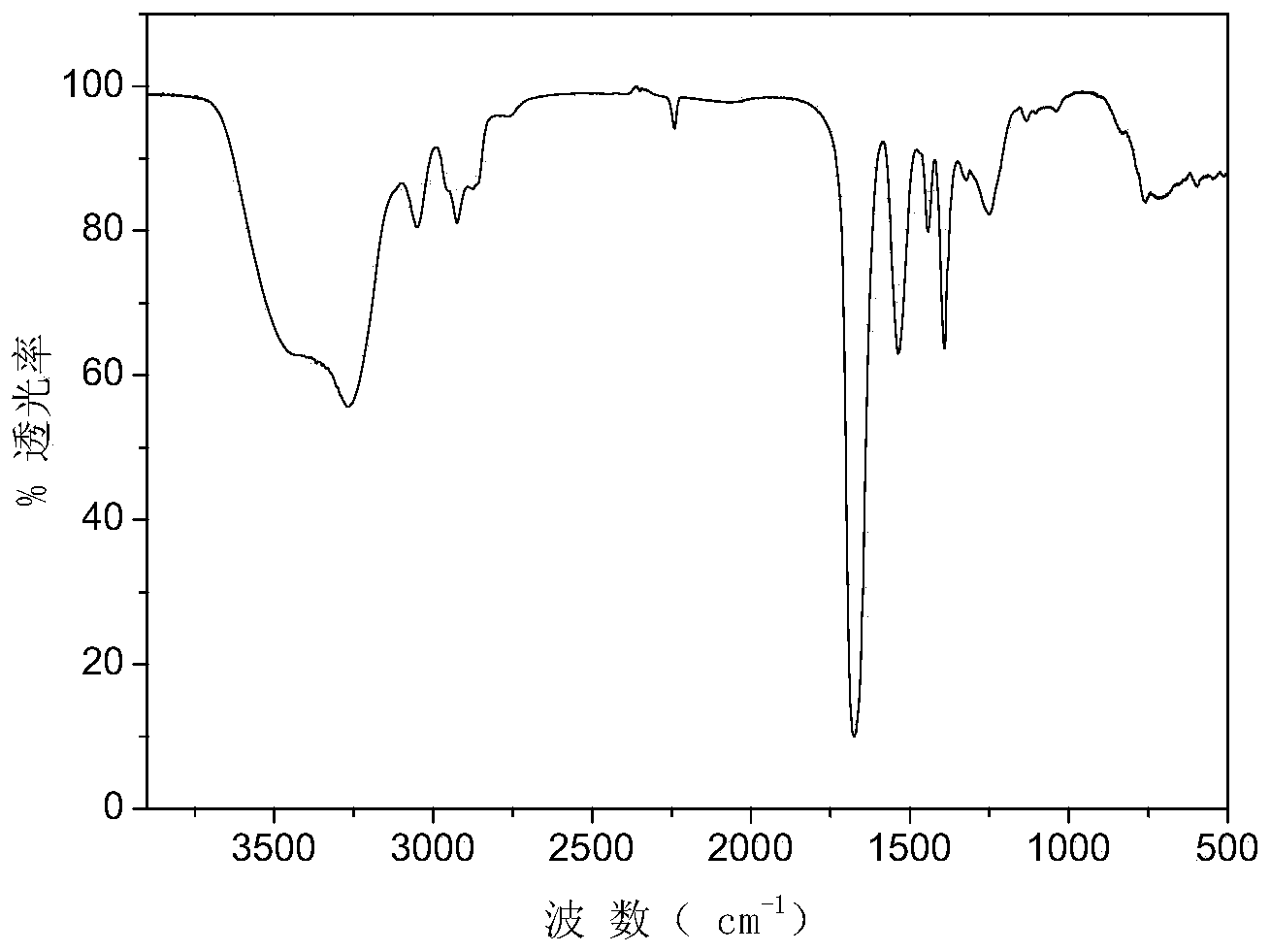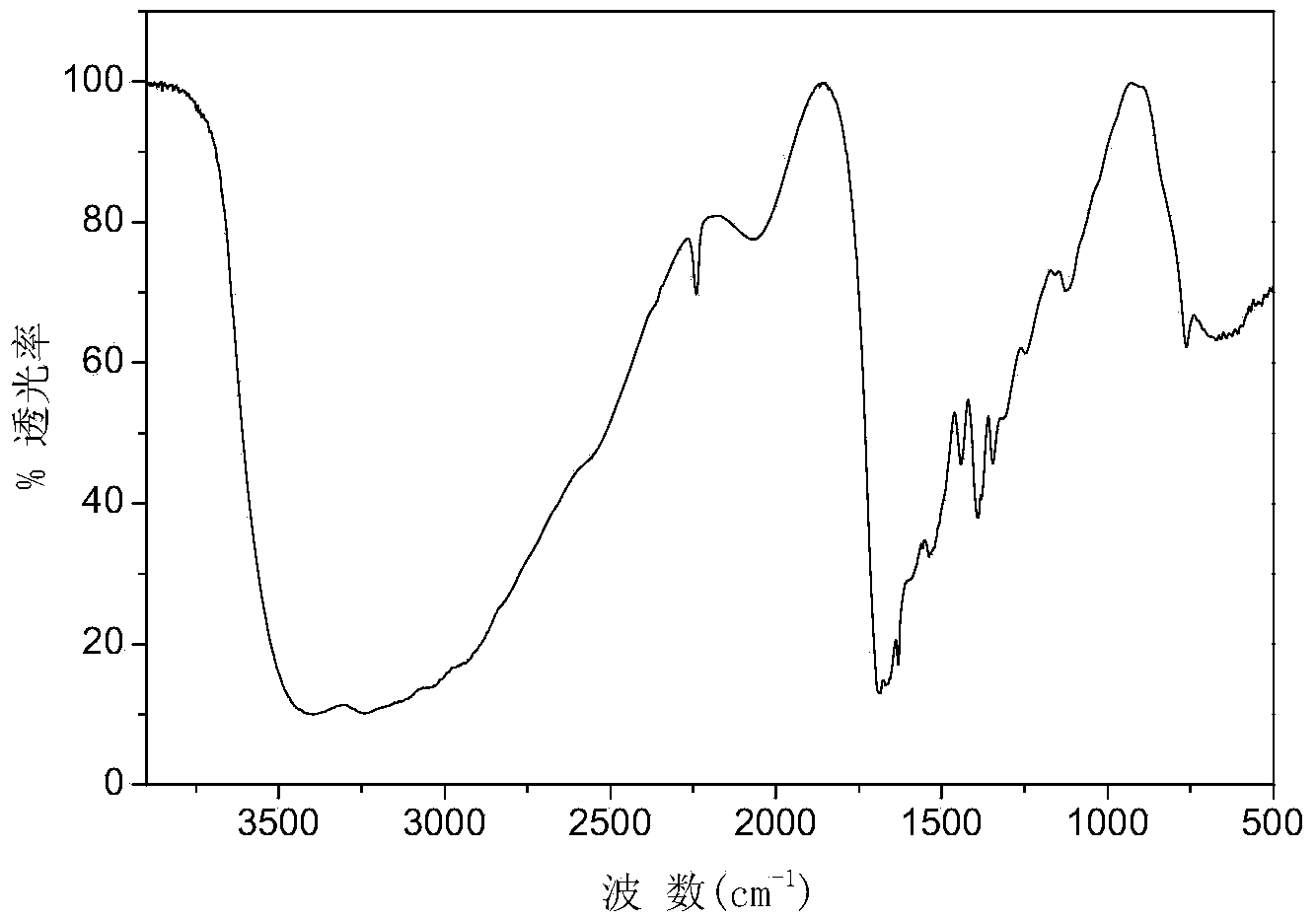Polyvinylamine-co-acrylonitrile self-crosslinking dye as well as preparation method and application thereof
A polyvinylamine and acrylonitrile technology, applied in dyeing, organic dyes, textiles and papermaking, etc., can solve the problems of complex dyeing process, low color fixation rate of cross-linked dyes, low light fastness, etc., to solve the problem of dyeing The effect of complicated process, simplified coloring process, and reduced production cost
- Summary
- Abstract
- Description
- Claims
- Application Information
AI Technical Summary
Problems solved by technology
Method used
Image
Examples
Embodiment 1
[0062] In a four-necked flask equipped with a thermometer, reflux condenser and mechanical stirring, add 10 g monomeric N-vinylformamide (NVF), 10 g monomeric acrylonitrile (AN) and N,N-dimethylformamide ( DMF) under nitrogen gas for 30 min with stirring. Raise the temperature to 60°C, add azobisisobutyronitrile (AIBN) with 10% of the total mass of the two monomers under nitrogen protection to initiate polymerization, react for 10 hours, precipitate solids from the reaction solution in water, filter and dry to obtain the product, and the obtained product Infrared spectrum such as figure 1 shown at 2243cm -1 The characteristic peak of cyano group was detected at 1667cm -1 The amide carbonyl absorption peak was detected at 2820cm -1 The aldehyde group absorption peak was detected at , indicating that the copolymerization occurred, and the corresponding non-hydrolyzed polyvinylamine-co-acrylonitrile copolymer was obtained.
[0063] Weigh 10 g of the above-prepared polyvinyla...
Embodiment 2~5
[0065] Preparation of 1#~4# pyrazolone-type small molecule yellow color body:
[0066] Add 1.90g of cyanuric chloride (0.0103mol), 20g of ice and 2mL of water into a 100mL beaker, and beat for 30 minutes. Slowly add 20 mL of an aqueous solution (0.01 mol) containing 1.84 g of m-phenylenediamine monosulfonic acid into the above-mentioned beating liquid dropwise, and the reaction temperature is 0-5°C. During the dropwise addition process, adjust the pH value of the reaction to 4-5 with 10% sodium carbonate solution, and detect the end point of the reaction with thin-layer chromatography (TLC). The developer is isobutanol:n-propanol:ethyl acetate:water=2 :4:1:3, the Rf value of the product is 0.65.
[0067] Add 2.5mL concentrated hydrochloric acid (36%) to the above-mentioned cyanuric chloride condensation product, cool to 0-5°C and add 0.71g sodium nitrite (0.0103mol), the solution after the addition can make the starch potassium iodide test paper turn blue color. After 30 mi...
Embodiment 6~15
[0069] Preparation of 5#~10#, 15#~18# small molecule color bodies:
[0070] The method is the same as that in Example 2, that is, the pyrazolone chromophoric matrix in Example 2 is replaced by the chromophore pyridone, H acid and its derivatives, and J acid to obtain corresponding small molecule chromophores 5# to 10# , 15#~18#, other conditions are consistent with embodiment 2.
PUM
| Property | Measurement | Unit |
|---|---|---|
| grafting amount | aaaaa | aaaaa |
| molecular weight distribution | aaaaa | aaaaa |
Abstract
Description
Claims
Application Information
 Login to View More
Login to View More - R&D
- Intellectual Property
- Life Sciences
- Materials
- Tech Scout
- Unparalleled Data Quality
- Higher Quality Content
- 60% Fewer Hallucinations
Browse by: Latest US Patents, China's latest patents, Technical Efficacy Thesaurus, Application Domain, Technology Topic, Popular Technical Reports.
© 2025 PatSnap. All rights reserved.Legal|Privacy policy|Modern Slavery Act Transparency Statement|Sitemap|About US| Contact US: help@patsnap.com



